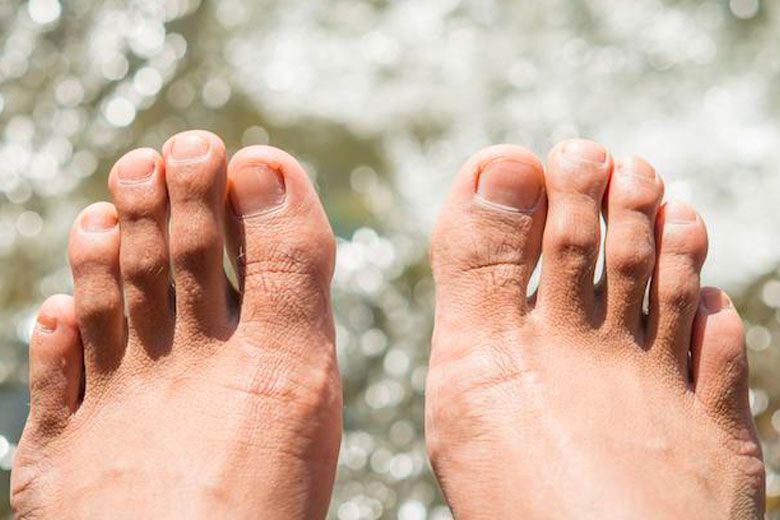Hammer toe
Hammer toe is a deformity of the foot in which the toe curls or bends downwards, rather than pointing straight forward. It is a condition which can affect any of the toes on the foot, although it is most common in the second or third toe. Hammer toe can also be present at birth and is typically a condition which can be treated.
REQUEST AN APPOINTMENT
Causes
Hammer toe happens when the middle joint of the toe bends downward. This occurrence can happen in a number of ways, including arthritis; wearing shoes which are ill-fitting; an injury to the toe; a foot arch which is unusually high; damage to peripheral nerves or the spinal cord; or the pressure created by a bunion, whereby the big toe points inwards to the second toe.
Symptoms
Discomfort when walking is one of the primary symptoms of hammer toe. You might also feel pain when moving the affected toe, the toes around the affected toe, or performing stretches. Pain as a result of hammer toe can range from slight discomfort to severe pain. Mild symptoms include a toe which bends downward, calluses and corns, inhibited movement of the foot and toes, and toes which are ‘claw like’. When more severe symptoms arise, it is recommended to see a podiatrist or orthopaedic surgeon as soon as possible.

Treatment
The treatment options which are most suitable for hammer toe will depend on the severity of an individual’s condition:
Mild symptoms of hammer toe can often be addressed simply by wearing shoes which fit better. For cases in which a high foot arch is understood to be causing the condition, insoles or toe pads can be recommended by a podiatrist in order to rectify this. The pads serve to move the position of the toe, helping both to improve the appearance of the toe, and relieve pain. Shoe insoles can typically be purchased over the counter.
If corns and bunions are contributing to the condition, it is possible to treat them with medications. It should be remembered that popping blisters should be avoided, as this can add to the problem, causing pain and infection. There are creams which can be bought over the counter that relieve pain and prevent infection, preventing blisters from rubbing when wearing shoes.
Stretching exercises can help to reposition a toe which has been affected by the condition, as well as relieve pain.
Where more severe symptoms are involved, minimally invasive surgery might be the best treatment route. Incisions used in minimally surgery are much smaller, usually a few millimetres in length which ensures minimal scarring. Other surgical treatments can focus on the repositioning of the toe, the realignment of tendons and joints, and the removal of bone which has been injured.
Patients undergoing surgery for hammer toe can typically return home on the day of surgery.
As with all foot surgery it is normal for swelling to persist for some months after surgery and is completely normal. This swelling will eventually completely subside with time and can take up to 12 months but often goes well before this.
Ankle pain can be distressing, especially if you're not sure what options are open to you. If you're wondering if surgery could help you, book an appointment.
* Routine private appointments either face to face or remotely are available
